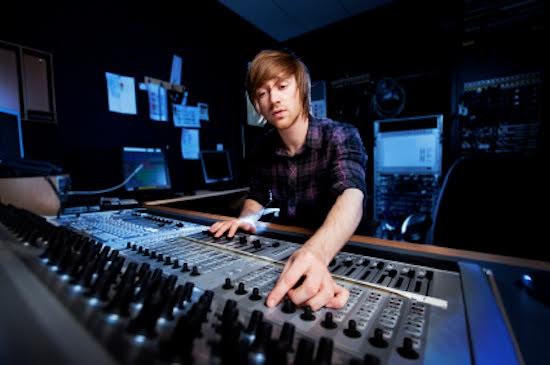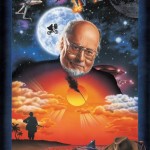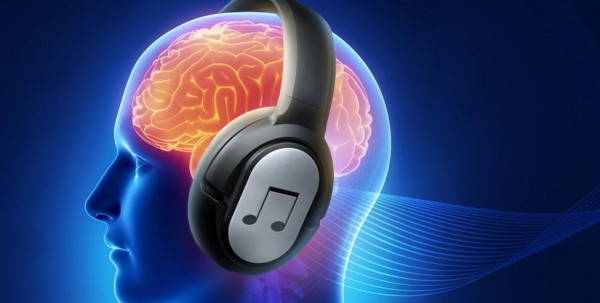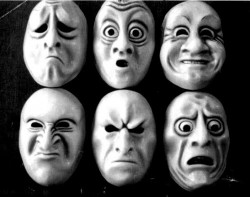
By Ryan Ghidoni
PSR Contributor
Thursday September 16th, 2016
Audio Active Advertising –
Episode 11: How GOOD producers become GREAT.
In radio…there are GOOD producers who record and assemble ads…and then there are GREAT producers who direct and orchestrate audio that can make the hairs on the back of your neck stand up and scream “let me hear that again”.
What separates good from great?
The ability to create a focused emotional response to the audio that is aligned with the goals of the ad.
Great production makes people FEEL the message.
First you need to decide what emotion or emotions to focus on:
A great ad can have either one core emotion OR one core and one secondary emotion.
Ads that have one emotion focus on one of the following:
PRODUCT experience: what the consumer feels when they use the product or service.
PURCHASE experience: what the consumer feels when they buy the product or service.
PRESENTATION experience: what the consumer feels when they are able to give or provide the product or service to a person they care deeply for.
Use PRODUCT experience when the product offering is unique or the client is the only one advertising the product.
Use PURCHASE experience when the product is not unique and many similar businesses are also advertising the product.
Use PRESENTATION experience when the person purchasing the product is not the person that is going to use the product (jewellery, lingerie, flowers, any gift really) OR if both will be using the product (a trip, a spa package for two, a niche restaurant), but the intent is to impress or surprise the non-purchasing party.
Two emotions, a primary and secondary, are required for:
POSITIONING ADS: where you have the negative emotion of the evil competitor AND the positive emotion of your heroic client.
PROBLEM/SOLUTION ADS: where you have the negative emotion of the problem AND the positive emotion of the solution the product provides.
The biggest thing to remember here is…MAKE THE POSITIVE EMOTION THE STAR OF THE SHOW.
 RULE: In a 30 second ad you should spend no more than 10 seconds on the negative and at least 20 seconds on the positive.
RULE: In a 30 second ad you should spend no more than 10 seconds on the negative and at least 20 seconds on the positive.
POSITIONING ADS that violate this rule will end up communicating that “that guy stinks” but people won’t remember who they should see instead.
PROBLEM/SOLUTION ADS that violate this rule will make people remember that “it really sucks when that happens” but they won’t recall what to purchase to make it all better.
Early in my production days, I was guilty of overproducing the secondary emotion and it would always undermine the effectiveness of the ad.
Now that I know WHAT emotions to communicate…HOW do I communicate them?
Through music and performance.
Dig deeper through your music service to find an emotionally charged track that matches the feeling you are trying to create. Then…
Voice the talent to the selected music track and make sure their tone and delivery matches the emotion and movement of the music. Don’t settle for reading the words off the page. Tell them what to punch, get them to really feel it, and direct an emotional performance.
I’m not naturally good at this…how can I get better?
WATCH MOVIES: Nobody uses music more effectively to create emotion than Hollywood. John William’s triumphant horns in Star Wars, the creepy repetitive piano in Halloween, the quirky synth sound of Ferris Bueller’s Day Off. If you use similar music styles in your productions…you can retrigger the same emotions people felt when they saw these movies.
GOOGLE “THE PSYCHOLOGY OF SOUND”: There is no shortage of online articles that break it down in ways that will inspire you to experiment with your next production. Here is just a taste of what I found on amplifon.co.uk/resources:
“A 2009 report from Sweden’s Lund University put forward six psychological mechanisms through which emotions may be produced when the brain reacts to sound.
1) Brain stem reflex: When the acoustic characteristics of the sound (eg loud or dissonant) signal a “potentially important and urgent event”, causing us to react on an instinctive level.
2) Evaluative conditioning: When an emotion is elicited by sound because we have heard it repeatedly in a certain setting, leading to an association between sound and setting.
3) Emotional contagion: When we perceive the emotion expressed by a piece of music: the music doesn’t necessarily sound sad, but rather we recognise it as expressing sadness.
4) Visual imagery: When the structure of a piece of music makes us imagine certain scenes or sensations, such as a rising melody connecting with the sensation of moving upwards.
5) Episodic memory: Also known as the “Darling, they’re playing our tune” phenomenon – when a particular sound or piece of music evokes a powerful memory.
6) Music expectancy: This is tied to our experiences with music: for instance, an unfamiliar variation on a standard note progression like may cause feelings of surprise and curiosity.
Of these mechanisms, the authors stated that the first two are in-born reactions, the second two develop during the first few years of our lives, and the last two tend to be learned during childhood and later life.”
All of the online articles have one common theme…
“Sound is the most effective tool to create real emotional responses”
The lack of visuals in not “radio’s handicap” because the sound will inspire a unique image in the listener’s mind that will be way more meaningful then any force fed image.
Radio has not drawn the short straw.
We have been given the only gun in a knife fight.
And it’s a big gun that can motivate people to buy.
We just need to learn to shoot it.
Sign up for the “Radio Ad of the Week” at audioactiveadvertising.com and this coming Monday I’ll send you three emotionally charged ads and a breakdown of what makes them tick.
One last thing…I can’t write an article on great production and not thank Rene Huebener and Gerry Derikx, the guys who taught me so much of what I passed along today. Thanks guys!
Next week we’ll continue to talk about “The Power of One” by focusing on choosing ONE Call to Action.
Ryan Ghidoni is an 18-year veteran of radio advertising and has worked with some of the most creative sales reps, writers, producers and voice talent in the business.
CHECK OUT “Audio Active Advertising” every week on Puget Sound Radio.
THE ONLINE AGENCY IS OPEN: Get “Audio Active” ads for your clients with Audio Active Advertising’s online agency. Check out over 100 Effective Ad Examples and then become the next one by ordering an Audio Active Campaign. Go to audioactiveadvertising.com.
Email Ryan:
Ry**@Au********************.com














